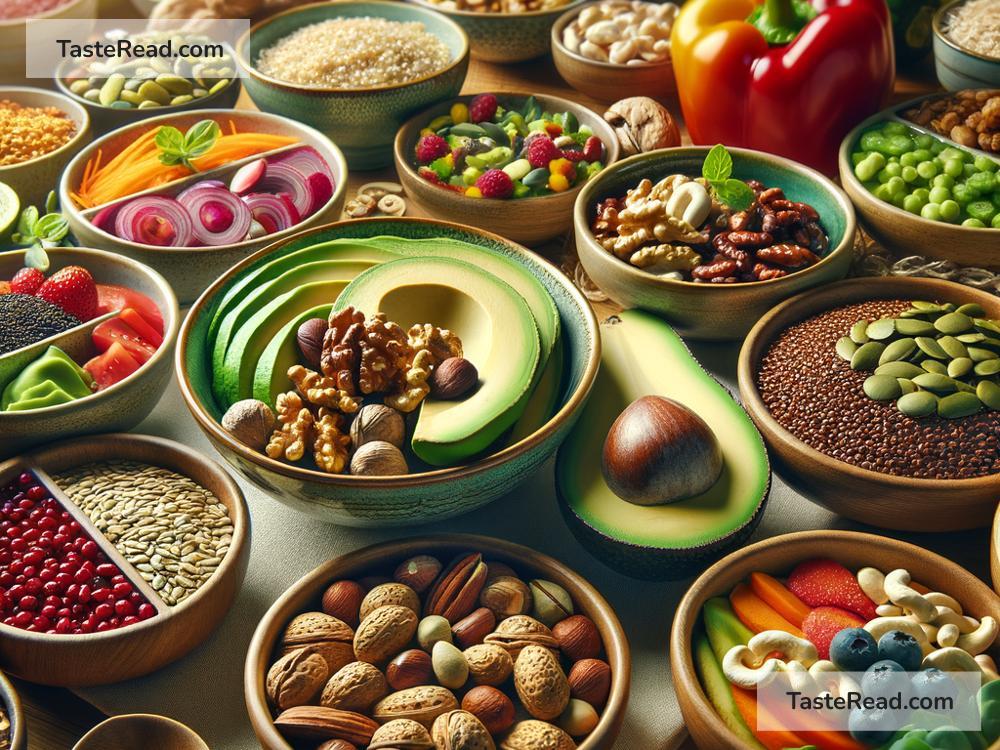How to Incorporate More Phytosterol-Rich Foods into Your Diet
Phytosterols may not be a familiar word, but they offer amazing health benefits—especially when it comes to supporting heart health. These plant-based compounds help reduce the absorption of dietary cholesterol in your body, which can lower your bad cholesterol levels (LDL). Including phytosterol-rich foods in your diet is an easy and natural way to improve your health. In this blog post, we’ll explain what phytosterols are, their benefits, and how you can add more of them to your meals.
What Are Phytosterols?
Phytosterols, also called plant sterols and stanols, are natural compounds found in plants. They look very similar to cholesterol found in animals but work in an entirely different (and more beneficial) way. Instead of raising cholesterol levels like animal cholesterol does, phytosterols block your body from absorbing cholesterol from food. This helps lower the overall amount of cholesterol in the bloodstream.
Numerous studies have shown that consuming 2–3 grams of phytosterols daily can reduce LDL (bad cholesterol) by up to 10%. This makes phytosterols a valuable nutrient for maintaining heart health and preventing cardiovascular disease.
Best Foods Rich in Phytosterols
Phytosterols are found naturally in many plant-based foods, but some foods are especially loaded with them. Here are some of the best options:
-
Nuts and Seeds
Nuts and seeds are fantastic sources of phytosterols, along with healthy fats, protein, and fiber. Almonds, pistachios, walnuts, sunflower seeds, flaxseeds, and chia seeds all contain high levels of these beneficial compounds. -
Vegetable Oils
Plant-based oils like olive oil, corn oil, soybean oil, and canola oil are rich in phytosterols. Some products, like spreads and margarine, are even fortified with extra phytosterols to enhance their heart-health benefits. -
Whole Grains
Whole grains such as quinoa, brown rice, oats, and barley offer phytosterols along with fiber and other important nutrients. -
Legumes
Beans, peas, and lentils contain moderate levels of phytosterols. They’re also high in protein, fiber, and other nutrients, making them a great addition to your diet. -
Vegetables and Fruits
Many fruits and vegetables contain small amounts of phytosterols. Broccoli, cauliflower, avocados, sweet potatoes, and oranges are examples of good choices. -
Fortified Foods
Some products like cereals, yogurt, and orange juice are fortified with added plant sterols and stanols. These can be especially helpful if you’re looking to increase your phytosterol intake without drastically changing your diet.
Benefits of Incorporating Phytosterols into Your Diet
Adding phytosterol-rich foods to your meals can have significant health benefits. Here’s why you should consider including them:
- Lowers Bad Cholesterol: Phytosterols are known for their ability to reduce LDL cholesterol levels, helping prevent heart disease.
- Supports Overall Heart Health: By reducing cholesterol and improving arterial function, phytosterols contribute to a healthier cardiovascular system.
- Boosts Immune Health: Phytosterols may play a role in supporting your immune system and reducing inflammation.
- Promotes a Balanced Diet: Many phytosterol-rich foods are naturally nutrient-dense, meaning they come with fiber, vitamins, and minerals that improve overall health.
Simple Ways to Add Phytosterol-Rich Foods to Your Diet
If you’re wondering how to incorporate phytosterol-rich foods into your day-to-day life, here are some easy tips to get started:
-
Snack on Nuts and Seeds
Keep nuts like almonds or pistachios on hand for quick and heart-healthy snacks. Sprinkle seeds like flax or sunflower seeds over yogurt, cereal, or smoothies. -
Use Healthier Oils
Choose plant-based oils like olive or canola oil for cooking and salad dressings. Swap butter for a phytosterol-fortified spread to reduce cholesterol intake. -
Eat Whole Grains
Replace refined grains with whole grains like brown rice, barley, and oats. Start your day with oatmeal or switch white pasta to whole-grain varieties. -
Make Legumes Your Star Ingredient
Add beans or lentils to soups, stews, salads, or even pasta dishes. They not only provide phytosterols but also boost fiber and protein intake. -
Try Fortified Foods
Look for foods that specifically mention added plant sterols on their labels, such as fortified margarine spreads, yogurts, or juices. These often provide concentrated amounts of phytosterols. -
Load Up on Veggies and Fruits
Include phytosterol-containing vegetables like broccoli, avocado, or sweet potato as a side dish or mix them into meals. Choose fruits like oranges and apples for dessert or snacks.
Things to Keep in Mind
While phytosterols can benefit heart health, it’s important to remember that the key to a healthy lifestyle is balance. Focus on a varied diet that includes lean proteins, whole grains, healthy fats, fruits, and vegetables. Also, keep an eye on portion sizes for high-calorie foods like nuts, seeds, and oils, since overconsumption can lead to unnecessary weight gain.
If you’re looking to make dietary changes to improve your cholesterol levels, you may also want to consult a healthcare provider or registered dietitian. They can give you personalized guidance based on your unique health needs.
Final Thoughts
Incorporating more phytosterol-rich foods into your diet is easier than you might think. By making small swaps—like snacking on nuts instead of chips, cooking with plant-based oils, or choosing fortified products—you can enjoy these heart-healthy benefits without major disruptions to your routine. Remember, every little change counts when it comes to your health! Start today and give your meals a plant-based boost with phytosterols for a healthier you.


